Online at Our EFC
What we’re doing, what’s working, what’s not
Listen in as various EFCA leaders share honestly about their experiences with social media in the church context: when we got started, choices we faced and price we paid, regrets we have, what we’re sure of and what we’re not, where we’re seeing gospel progress.
Megan Luckie
media and connections associate, First EFC, Austin, Texas (attendance: 1,900)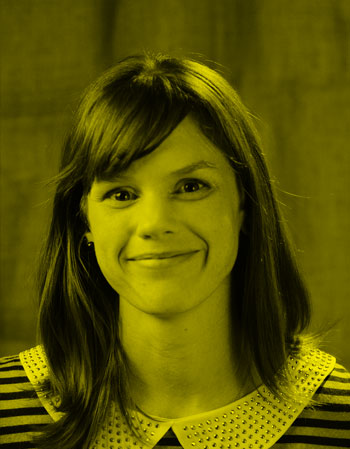
How did your church get started on social media?
We began our social-media presence in 2009 by creating a Facebook page and Twitter profile. I also searched for our church on the web, then claimed our listings and updated information on crowd-sourced websites like Google Places and Yelp. We wanted to make sure that no matter how you found FEFC on the web, there was accurate information for anyone looking for us.
We started out simply by posting our weekly emails and the occasional, “sign up for this” or “don’t forget about that.” It was only late 2012 that we starting being intentional about using social media as a way to not only get our information out but also connect, engage and draw people in.
We primarily use Facebook, since that’s where most of our people are. We typically post four to five times a week, usually toward the end of the day or on Sunday afternoons. It’s important to remember that the time you’re at your desk is not the time most people are on Facebook. We take advantage of Facebook’s scheduled posts and use Hootsuite to manage our Twitter account.
I hope we’re creating a “slow drip” of influence for the gospel—church members being encouraged through a post, sharing a video or story, or inviting a friend to a Facebook event. The gospel is spread person-to-person, and we want to support that.
Do you have any regrets?
I regret not starting sooner. We are behind the curve when it comes to using the platform of social networks to connect the church and tell God’s story where people are.
Matt Larson
senior pastor, Anthem Church, Newbury Park, Calif. (attendance: 350)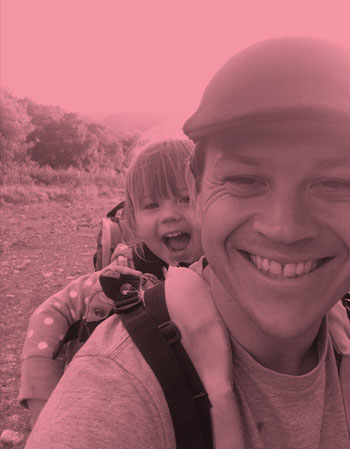
What choices did you face?
We believe that the gospel is of the utmost importance, so we made the active decision to be apolitical on social media. We also struggled a bit with whether individuals (myself included) are tweeting/posting on behalf of the church or if we are exclusively individuals—and is there any way to separate that. When planting churches, the identity of the church is often wrapped up in the identity of the leaders, so the lines are consistently blurred.
We chose to communicate primarily through personal channels (i.e. Matt Larson's Twitter, Instagram and Facebook rather than Anthem Church’s). Though we do have church accounts, they are used less frequently. I believe people respond to a personal account rather than a corporate account.
What are you sure of?
It’s a great tool for enhancing face-to-face relationships. When you walk into a room full of 200 people and the initial conversation is already out of the way (what did you do this week?), you can dive into more substantial and meaningful conversations. It’s also a touchpoint for people with whom you struggle to find common ground. You get a glimpse of what they are into and can engage conversations through that avenue.
What are you not sure of?
I don’t believe social media will have this level of influence forever. It seems like there will be a tipping point where people jump ship and try to re-engage society on a personal level.
Mark Lee
lead pastor, Vantage Point Church, Eastvale, Calif. (attendance: 1,200)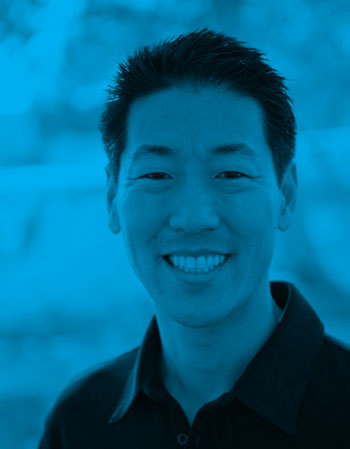
What price did you pay?
We were too announcement-oriented in the beginning, and no one wanted to pay attention to us. So one of the most significant decisions we’ve made is to keep the “social” in social media. We use much more of our Facebook page for interaction and discipleship.
For example, we often post a question that promotes discussion—sometimes serious discussions, sometimes funny. We had a planking contest when planking was en vogue, and our Facebook just exploded.
Every Sunday afternoon, while people are still feeling the afterglow, we ask what they liked about the service or the sermon. When we were in the middle of a relationship series, we asked everyone to post a wedding picture for a slideshow promoting faithfulness. Again: tons of pictures and interaction as people made fun of each other's pictures.
Jonathan Dahl
executive pastor, Liberty Bible Church, Chesterton, Ind. (attendance: 1,800)
What is one way in which you are “not there yet”?
LBC’s use of Facebook was initiated in 2009, but we are not using it in an overly intentional way right now. As a church we do not currently have a presence on Twitter, Instagram, Pinterest, Google + or other forms of social media. And no commitment has been made to social media in the areas of funding, staffing, philosophy, programming, worship services or small groups. LBC silence.
Yet, increasingly, social media is where those whom we are trying to reach are “at.” It is the connecting hub of our world today. Liberty Bible Church must become better at this, and we will! But our social media presence must flow out of other larger communication decisions. Over the past four months, behind the scenes, we’ve been working toward an over-arching communications strategy. Social media is absolutely a part of this, but we have other broader communications “issues”/”opportunities” to address first.
David Parks
lead pastor, Appleton Gospel (EFCA), Appleton, Wis. (attendance: 110)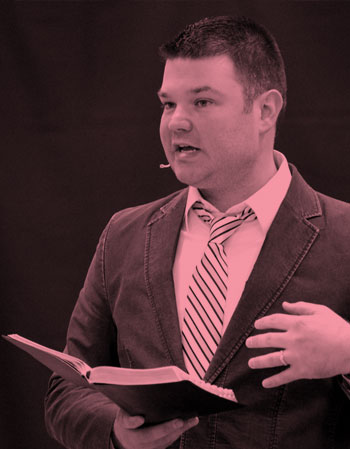
What price did you pay?
The fall after we launched, I experimented with targeted advertising through a Google search and Facebook ad campaign. We set aside $75 for each ad ($150 total) for a month or two. A few Lawrence University students visited our Sunday gathering from the Facebook ads and we had a marked increase in traffic to our website from the Google search ads, but we haven’t repeated the ad campaigns because they just didn’t have a good enough return on investment.
Full disclosure: We also tried a more traditional form of advertising by doing a postcard mailing. The results of that campaign were equally disappointing, but it was far more expensive than the Facebook and Google ads (more like $1500). I guess from that standpoint, the social ads were a lot more effective?
What’s one social-media choice you’ve employed to enhance ministry?
There is a temptation to spend all day on the computer and never actually talk to someone (in or outside the church) face to face. That isn’t a good thing. Hootsuite is a helpful tool to simplify online interaction so you don’t have to be online 24/7. If you want to have a series of posts to multiple networks that go out through the week, you can schedule all your posts with Hootsuite and then go about your week.
Bruce Herwig
pastor of communications, Trinity EFC, Redlands, Calif. (attendance: 1,650)
What choices did you face?
The biggest choice is what social media platforms you will use. My big suggestion is to go where your people are. Initially we had no idea what platform would take off first. I had a hint in that I only knew of one person who used Twitter but more than a dozen who had Facebook accounts.
Facebook does a wonderful job of tracking your users based on age and gender. From our Facebook reports, we can see that our audience is 1/3 male, 2/3 female. But when it comes to likes and comments, we’re 90-percent female users. I have no problem with this. Most of the time, the moms are the keepers of the calendar and the ones who keep their families in the know.
I’m Facebook fans with about a dozen churches that I follow to keep my pulse on how social media is being used by other churches.
The learning curve for each platform can be humbling. I had several 20-something ministry assistants who would help explain things and show me the ropes. Some of the terms (pins, posts, likes, pokes, etc.) seem like learning a foreign language. Recognize upfront that you will have to “play around” to get familiar . . . and be consistent to get good. But you can get good, and it doesn’t take that much time.
Don McLean
senior pastor, Atlantic (Iowa) EFC (attendance: 200)
What are you sure of?
Social media is here to stay, although I expect the various forms will continue to change.
What are you not sure of?
I’m not sure how to keep up. My own daughter (15 years old) is a good example. She tells me that she has already moved on from Facebook, and now she much prefers Tumblr. Others go in for Pinterest or Instagram or others I’m not even aware of. I’m not sure what the church should do with this ever-changing landscape. Does this mean we now need a Tumblr page? And a church Pinterest? Where does it end?
Sometimes I feel a little inadequate. Our church has Twitter and Facebook accounts, but the “cool pastors” blog and tweet personally. As a pastor, you feel, Am I falling short here? And how much time can I justify spending on our church’s Facebook page when there are sermons to write and people to visit and Bible studies to prepare? It’s a new layer that didn’t exist 10-15 years ago
Rachel Sankey
communications specialist, EFC of Crystal Lake (Ill.) (attendance: 750)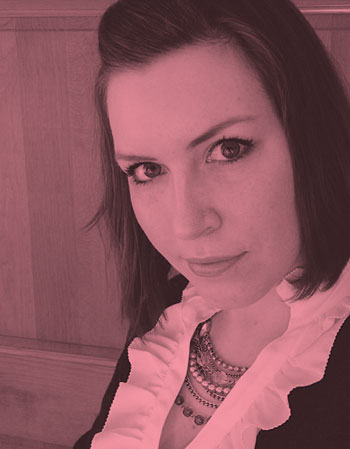
What choices did you face?
The choice early on was whether we wanted to allow for multiple Twitter accounts or filter all the content through one channel. In the end, it worked out well to split the accounts. We encourage everyone to follow @EFCCL for all-church updates, and then they can also choose to subscribe to any of the other ministries that have accounts. We have also reserved a few Twitter accounts that we might use in the future.
Tweeting on behalf of a church or company is different from tweeting personally. The posts written by EFCCL are phrased similarly to how we would write for a brochure or Sunday bulletin, but we switch to a more informal voice when writing @-replies to fellow Twitter users. (We also like to end @-replies with a short signature like “—Rachel” to let people know who is speaking and to make the conversation more personal.)
Jeff Moors
college/young adult pastor, North Coast Church, Vista, Calif. (attendance: 9,000)
What price did you pay?
We finally decided to move ahead with our social media in late 2012, after seeing that it wasn’t a fad. Starting later has kept us from paying any price due to mistakes (we have learned from others). But we have paid the price of not being there at the start: We missed out on the opportunity to engage in the conversation when there was less noise and clutter to weed through. Those who got in earlier were heard more easily.
What are you sure of?
Social media is more relational than promotional.
What are you not sure of?
What platforms will remain popular. That is why we watch carefully the new ones that come out and decide if it is something we go for. We have added Instagram, and some sub-ministries are experimenting with Vine.
What’s one social-media choice you’ve employed to enhance ministry?
You won’t see us do multiple posts in a row about “come to this event” but you will see a lot of encouraging quotes, questions to engage and pics of what goes on. For example, recently we did a major biennial event called weekend of service, where we shut down the church and go out and serve the community through various projects. Afterward, we asked, “How are you recovering from your #weekendofservice shift? Ice packs, shower, milkshakes, or just a long nap? Share your posts & pics w/us.” We got a great response—around 70 comments.
Cal Swan
superintendent, EFCA Central District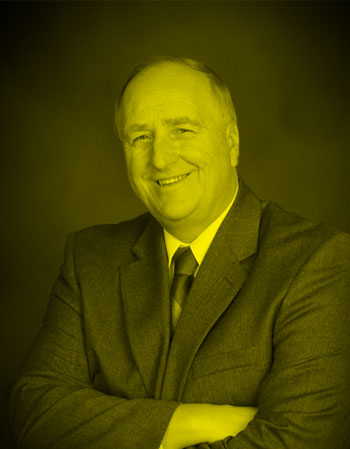
What is one way in which your district is “not there yet”?
Five years ago, some of our district staff moved ahead with blogs and Facebook pages. Some underestimated the time involved and that first try was not worth the time invested, so we pulled back. We chose to spend our time with traditional, in-person ministry and small-group affinity meetings. Face-to-face still pays big dividends.
We are, however, rethinking this. Five years has changed a lot in our society. This time we are working with a communication consultant to help us evaluate and plan for a social-media presence. We can’t afford a full-time social-media person, and I would not want to move ahead again with everyone doing their own thing. But we’re planning a clear district approach that will clarify how much time it will take per team member to do this well.
Stephanie Murphy
worship and media administration, Stonebridge Church (EFCA), Cedar Rapids, Iowa (attendance: 800)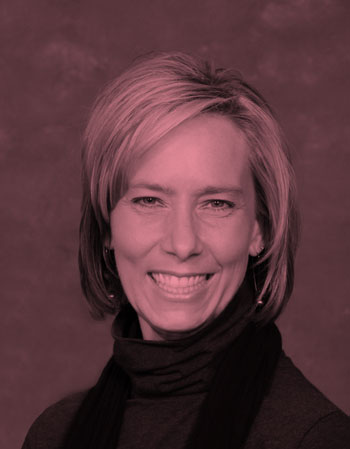
What’s one social-media choice you’ve employed to enhance ministry?
We tried a fun approach on Twitter called “Sermon Recap in 10 Tweets” to go along with our Sunday sermons, and we actually engage Twitter (real time) on Sunday mornings. We started this at the end of 2012 when we were embarking on a new sermon series that incorporated study guides, reading plans, Scripture memory, etc. We were looking for additional ways to communicate and interact with our congregation, both on Sunday and during the week.
We don’t display our Twitter feed upfront during the service (although we did try that approach during a youth conference last year). But we include the #eatthisbook hashtag on our graphics in the lower corner (which are displayed up front), so that those who are familiar with Twitter would know what that means.
Then, we tweet out snippets of each sermon during the service, as well as add slides from the morning presentation—all with the hashtag #eatthisbook. I also create graphics with text overlay for some of the Scriptures and tweet those out as a creative way to add content.
We’ve received encouraging/positive feedback but would like to see more interaction in the way of questions, comments and retweets/sharing. So we’ll continue to use it on Sundays but haven’t included it in other areas of our ministry at this point.
Jonathan Carone
creative director, Two Rivers Church, Lenoir City, Tenn. (attendance: 1,900)
What choices did you face?
Before I took over this position, we basically used Facebook as a place to simply tell people about events. It was, in essence, a big announcement board. We also had our Twitter attached to it, so the Facebook posts would go straight to Twitter. The first thing I did was unhook the two. True, by linking them, you only have to worry about updating one platform, not two. However, the two sites are used very differently. By separating the two, you can cater your message to your audience.
For example, on Facebook, five of our last six interactions have been from females, four of which were moms. I know that if we want to get any information out about any ministry involving kids, students or moms, Facebook is my place to go.
On Twitter, other than one elder and a 39-year-old drummer, 20 of our last 25 mentions have been by people under 35.
The biggest factor in choices is time. For example, the potential with both Instagram and Pinterest is limitless, but I’d rather wait and launch them well than jump on when we don’t have the time to do it right.
Whitney Gandara
communications coordinator, Seacoast Community Church, Encinitas, Calif. (attendance: 500)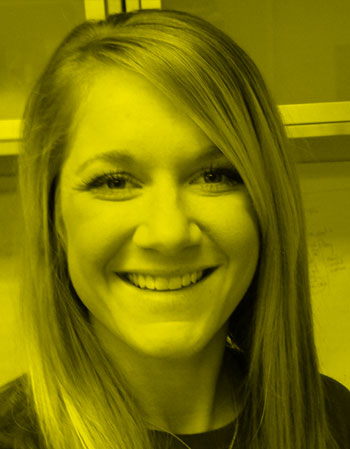
Do you have any regrets?
Beginning with two Facebook accounts and confusing our people/friends. Back in 2010, our church originally had both a personal and a business account. Since it is a policy of Facebook to not have businesses as “personal” accounts, we got rid of the former. This hurt us because we had such a large group of “friends.” Now we are spending extra energy to encourage everyone to “like” us to get our friends following the right page.
We also regret “spam posts.” This is our name for repeated calls to action (to events we want to promote) where no one interacts. It all became “white noise” because there was no strategy behind how and when they were posted. Our Facebook site was flooded with these spam posts, so people didn’t want to spend time there—it was neither a reliable source of interactive information nor a place where life was happening. Rather, it was just “go to this, go to that.” We needed to be more active on our page with other current info (i.e. phrases from this week’s sermon, photos from last week’s baptism, etc.) in order to create a page where our attenders go to see “what’s happening now.”
It has taken time for our followers to begin to interact with our posts again and consider our Facebook page interesting. Posting what is happening right now creates a pulse. Now people are more likely to interact not only with what we are posting but also with the posts that were once just white noise.
Ric Stanghelle
senior pastor, Lakes EFC, Lindstrom, Minn. (attendance: 600)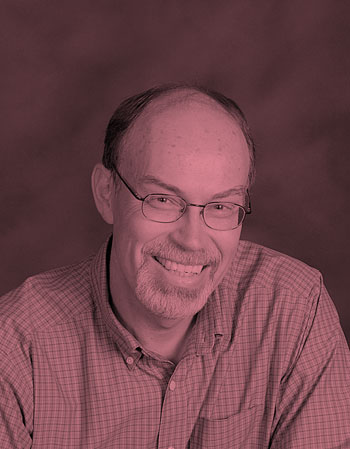
What are you sure of?
We are not where we want to be, but we are working at it. I think the biggest challenge, working in a church with all age groups, is that we have to communicate by many different means—website, email, paper communications, Facebook, text messages, verbal announcements.
It takes time to communicate well, and we continually wrestle with what is most effective. I’m glad we have a broad age range on our staff, because it seems like we each have a preferred means of communication, and it is different across generational lines and also based on how “techy” a person is. We are striving to “become all things to all men so that by all possible means we might bring many to Christ” (loose paraphrase of 1 Corinthians 9:22).
Online at Our EFC
Listen in as various EFCA leaders share honestly about their experiences with social media in the church context: when we got started, choices we faced and price we paid, regrets we have, what we’re sure of and what we’re not, where we’re seeing gospel progress.
Megan Luckie
Media and connections associate, First EFC, Austin, Texas (Attendance: 1,900)
HOW DID YOUR CHURCH GET STARTED ON SOCIAL MEDIA?
We began our social-media presence in 2009 by creating a Facebook page and Twitter profile. I also searched for our church on the web, then claimed our listings and updated information on crowd-sourced websites like Google Places and Yelp. We wanted to make sure that no matter how you found FEFC on the web, there was accurate information for anyone looking for us.
We started out simply by posting our weekly emails and the occasional, “sign up for this” or “don’t forget about that.” It was only late 2012 that we starting being intentional about using social media as a way to not only get our information out but also connect, engage and draw people in.
We primarily use Facebook, since that’s where most of our people are. We typically post four to five times a week, usually toward the end of the day or on Sunday afternoons. It’s important to remember that the time you’re at your desk is not the time most people are on Facebook. We take advantage of Facebook’s scheduled posts and use Hootsuite to manage our Twitter account.
I hope we’re creating a “slow drip” of influence for the gospel—church members being encouraged through a post, sharing a video or story, or inviting a friend to a Facebook event. The gospel is spread person-to-person, and we want to support that.
DO YOU HAVE ANY REGRETS?
I regret not starting sooner. We are behind the curve when it comes to using the platform of social networks to connect the church and tell God’s story where people are.
MATT LARSON
Senior Pastor, Anthem Church, Newbury Park, Calif. (attendance: 350)
WHAT CHOICES DID YOU FACE?
We believe that the gospel is of the utmost importance, so we made the active decision to be apolitical on social media. We also struggled a bit with whether individuals (myself included) are tweeting/posting on behalf of the church or if we are exclusively individuals—and is there any way to separate that. When planting churches, the identity of the church is often wrapped up in the identity of the leaders, so the lines are consistently blurred.
We chose to communicate primarily through personal channels (i.e. Matt Larson’s Twitter, Instagram and Facebook rather than Anthem Church’s). Though we do have church accounts, they are used less frequently. I believe people respond to a personal account rather than a corporate account.
WHAT ARE YOU SURE OF?
It’s a great tool for enhancing face-to-face relationships. When you walk into a room full of 200 people and the initial conversation is already out of the way (what did you do this week?), you can dive into more substantial and meaningful conversations. It’s also a touchpoint for people with whom you struggle to find common ground. You get a glimpse of what they are into and can engage conversations through that avenue.
WHAT ARE YOU NOT SURE OF?
I don’t believe social media will have this level of influence forever. It seems like there will be a tipping point where people jump ship and try to re-engage society on a personal level.
MARK LEE
Lead Pastor, Vantage Point Church, Eastvale, Calif. (attendance: 1,200)
WHAT PRICE DID YOU PAY?
We were too announcement-oriented in the beginning, and no one wanted to pay attention to us. So one of the most significant decisions we’ve made is to keep the “social” in social media. We use much more of our Facebook page for interaction and discipleship.
For example, we often post a question that promotes discussion—sometimes serious discussions, sometimes funny. We had a planking contest when planking was en vogue, and our Facebook just exploded.
Every Sunday afternoon, while people are still feeling the afterglow, we ask what they liked about the service or the sermon. When we were in the middle of a relationship series, we asked everyone to post a wedding picture for a slideshow promoting faithfulness. Again: tons of pictures and interaction as people made fun of each other’s pictures.
JONATHAN DAHL
Executive Pastor, Liberty Bible Church, Chesterton, Ind. (attendance: 1,800)
WHAT IS ONE WAY IN WHICH YOU ARE “NOT THERE YET”?
LBC’s use of Facebook was initiated in 2009, but we are not using it in an overly intentional way right now. As a church we do not currently have a presence on Twitter, Instagram, Pinterest, Google + or other forms of social media. And no commitment has been made to social media in the areas of funding, staffing, philosophy, programming, worship services or small groups. LBC silence.
Yet, increasingly, social media is where those whom we are trying to reach are “at.” It is the connecting hub of our world today. Liberty Bible Church must become better at this, and we will! But our social media presence must flow out of other larger communication decisions. Over the past four months, behind the scenes, we’ve been working toward an over-arching communications strategy. Social media is absolutely a part of this, but we have other broader communications “issues”/”opportunities” to address first.
DAVID PARKS
Lead Pastor, Appleton Gospel (efca), Appleton, Wis. (attendance: 110)
WHAT PRICE DID YOU PAY?
The fall after we launched, I experimented with targeted advertising through a Google search and Facebook ad campaign. We set aside $75 for each ad ($150 total) for a month or two. A few Lawrence University students visited our Sunday gathering from the Facebook ads and we had a marked increase in traffic to our website from the Google search ads, but we haven’t repeated the ad campaigns because they just didn’t have a good enough return on investment.
Full disclosure: We also tried a more traditional form of advertising by doing a postcard mailing. The results of that campaign were equally disappointing, but it was far more expensive than the Facebook and Google ads (more like $1500). I guess from that standpoint, the social ads were a lot more effective?
WHAT’S ONE SOCIAL-MEDIA CHOICE YOU’VE EMPLOYED TO ENHANCE MINISTRY?
There is a temptation to spend all day on the computer and never actually talk to someone (in or outside the church) face to face. That isn’t a good thing. Hootsuite is a helpful tool to simplify online interaction so you don’t have to be online 24/7. If you want to have a series of posts to multiple networks that go out through the week, you can schedule all your posts with Hootsuite and then go about your week.
BRUCE HERWIG
Pastor Of Communications, Trinity Efc, Redlands, Calif. (attendance: 1,650)
WHAT CHOICES DID YOU FACE?
The biggest choice is what social media platforms you will use. My big suggestion is to go where your people are. Initially we had no idea what platform would take off first. I had a hint in that I only knew of one person who used Twitter but more than a dozen who had Facebook accounts.
Facebook does a wonderful job of tracking your users based on age and gender. From our Facebook reports, we can see that our audience is ⅓ male, ⅔ female. But when it comes to likes and comments, we’re 90-percent female users. I have no problem with this. Most of the time, the moms are the keepers of the calendar and the ones who keep their families in the know.
I’m Facebook fans with about a dozen churches that I follow to keep my pulse on how social media is being used by other churches.
The learning curve for each platform can be humbling. I had several 20-something ministry assistants who would help explain things and show me the ropes. Some of the terms (pins, posts, likes, pokes, etc.) seem like learning a foreign language. Recognize upfront that you will have to “play around” to get familiar … and be consistent to get good. But you can get good, and it doesn’t take that much time.
DON MCLEAN
Senior Pastor, Atlantic (iowa) Efc (attendance: 200)
WHAT ARE YOU SURE OF?
Social media is here to stay, although I expect the various forms will continue to change.
WHAT ARE YOU NOT SURE OF?
I’m not sure how to keep up. My own daughter (15 years old) is a good example. She tells me that she has already moved on from Facebook, and now she much prefers Tumblr. Others go in for Pinterest or Instagram or others I’m not even aware of. I’m not sure what the church should do with this ever-changing landscape. Does this mean we now need a Tumblr page? And a church Pinterest? Where does it end?
Sometimes I feel a little inadequate. Our church has Twitter and Facebook accounts, but the “cool pastors” blog and tweet personally. As a pastor, you feel, Am I falling short here? And how much time can I justify spending on our church’s Facebook page when there are sermons to write and people to visit and Bible studies to prepare? It’s a new layer that didn’t exist 10-15 years ago
RACHEL SANKEY
Communications Specialist, Efc Of Crystal Lake (ill.) (attendance: 750)
WHAT CHOICES DID YOU FACE?
The choice early on was whether we wanted to allow for multiple Twitter accounts or filter all the content through one channel. In the end, it worked out well to split the accounts. We encourage everyone to follow @EFCCL for all-church updates, and then they can also choose to subscribe to any of the other ministries that have accounts. We have also reserved a few Twitter accounts that we might use in the future.
Tweeting on behalf of a church or company is different from tweeting personally. The posts written by EFCCL are phrased similarly to how we would write for a brochure or Sunday bulletin, but we switch to a more informal voice when writing @-replies to fellow Twitter users. (We also like to end @-replies with a short signature like “—Rachel” to let people know who is speaking and to make the conversation more personal.)
JEFF MOORS
College/young Adult Pastor, North Coast Church, Vista, Calif. (attendance: 9,000)
WHAT PRICE DID YOU PAY?
We finally decided to move ahead with our social media in late 2012, after seeing that it wasn’t a fad. Starting later has kept us from paying any price due to mistakes (we have learned from others). But we have paid the price of not being there at the start: We missed out on the opportunity to engage in the conversation when there was less noise and clutter to weed through. Those who got in earlier were heard more easily.
WHAT ARE YOU SURE OF?
Social media is more relational than promotional.
WHAT ARE YOU NOT SURE OF?
What platforms will remain popular. That is why we watch carefully the new ones that come out and decide if it is something we go for. We have added Instagram, and some sub-ministries are experimenting with Vine.
WHAT’S ONE SOCIAL-MEDIA CHOICE YOU’VE EMPLOYED TO ENHANCE MINISTRY?
You won’t see us do multiple posts in a row about “come to this event” but you will see a lot of encouraging quotes, questions to engage and pics of what goes on. For example, recently we did a major biennial event called weekend of service, where we shut down the church and go out and serve the community through various projects. Afterward, we asked, “How are you recovering from your #weekendofservice shift? Ice packs, shower, milkshakes, or just a long nap? Share your posts & pics w/us.” We got a great response—around 70 comments.
CAL SWAN
Superintendent, Efca Central District
WHAT IS ONE WAY IN WHICH YOUR DISTRICT IS “NOT THERE YET”?
Five years ago, some of our district staff moved ahead with blogs and Facebook pages. Some underestimated the time involved and that first try was not worth the time invested, so we pulled back. We chose to spend our time with traditional, in-person ministry and small-group affinity meetings. Face-to-face still pays big dividends.
We are, however, rethinking this. Five years has changed a lot in our society. This time we are working with a communication consultant to help us evaluate and plan for a social-media presence. We can’t afford a full-time social-media person, and I would not want to move ahead again with everyone doing their own thing. But we’re planning a clear district approach that will clarify how much time it will take per team member to do this well.
STEPHANIE MURPHY
Worship And Media Administration, Stonebridge Church (efca), Cedar Rapids, Iowa (attendance: 800)
WHAT’S ONE SOCIAL-MEDIA CHOICE YOU’VE EMPLOYED TO ENHANCE MINISTRY?
We tried a fun approach on Twitter called “Sermon Recap in 10 Tweets” to go along with our Sunday sermons, and we actually engage Twitter (real time) on Sunday mornings. We started this at the end of 2012 when we were embarking on a new sermon series that incorporated study guides, reading plans, Scripture memory, etc. We were looking for additional ways to communicate and interact with our congregation, both on Sunday and during the week.
We don’t display our Twitter feed upfront during the service (although we did try that approach during a youth conference last year). But we include the #eatthisbook hashtag on our graphics in the lower corner (which are displayed up front), so that those who are familiar with Twitter would know what that means.
Then, we tweet out snippets of each sermon during the service, as well as add slides from the morning presentation—all with the hashtag #eatthisbook. I also create graphics with text overlay for some of the Scriptures and tweet those out as a creative way to add content.
We’ve received encouraging/positive feedback but would like to see more interaction in the way of questions, comments and retweets/sharing. So we’ll continue to use it on Sundays but haven’t included it in other areas of our ministry at this point.
JONATHAN CARONE
Creative Director, Two Rivers Church, Lenoir City, Tenn. (attendance: 1,900)
WHAT CHOICES DID YOU FACE?
Before I took over this position, we basically used Facebook as a place to simply tell people about events. It was, in essence, a big announcement board. We also had our Twitter attached to it, so the Facebook posts would go straight to Twitter. The first thing I did was unhook the two. True, by linking them, you only have to worry about updating one platform, not two. However, the two sites are used very differently. By separating the two, you can cater your message to your audience.
For example, on Facebook, five of our last six interactions have been from females, four of which were moms. I know that if we want to get any information out about any ministry involving kids, students or moms, Facebook is my place to go.
On Twitter, other than one elder and a 39-year-old drummer, 20 of our last 25 mentions have been by people under 35.
The biggest factor in choices is time. For example, the potential with both Instagram and Pinterest is limitless, but I’d rather wait and launch them well than jump on when we don’t have the time to do it right.
WHITNEY GANDARA
Communications Coordinator, Seacoast Community Church, Encinitas, Calif. (attendance: 500)
DO YOU HAVE ANY REGRETS?
Beginning with two Facebook accounts and confusing our people/friends. Back in 2010, our church originally had both a personal and a business account. Since it is a policy of Facebook to not have businesses as “personal” accounts, we got rid of the former. This hurt us because we had such a large group of “friends.” Now we are spending extra energy to encourage everyone to “like” us to get our friends following the right page.
We also regret “spam posts.” This is our name for repeated calls to action (to events we want to promote) where no one interacts. It all became “white noise” because there was no strategy behind how and when they were posted. Our Facebook site was flooded with these spam posts, so people didn’t want to spend time there—it was neither a reliable source of interactive information nor a place where life was happening. Rather, it was just “go to this, go to that.” We needed to be more active on our page with other current info (i.e. phrases from this week’s sermon, photos from last week’s baptism, etc.) in order to create a page where our attenders go to see “what’s happening now.”
It has taken time for our followers to begin to interact with our posts again and consider our Facebook page interesting. Posting what is happening right now creates a pulse. Now people are more likely to interact not only with what we are posting but also with the posts that were once just white noise.
RIC STANGHELLE
Senior Pastor, Lakes Efc, Lindstrom, Minn. (attendance: 600)
WHAT ARE YOU SURE OF?
We are not where we want to be, but we are working at it. I think the biggest challenge, working in a church with all age groups, is that we have to communicate by many different means—website, email, paper communications, Facebook, text messages, verbal announcements.
It takes time to communicate well, and we continually wrestle with what is most effective. I’m glad we have a broad age range on our staff, because it seems like we each have a preferred means of communication, and it is different across generational lines and also based on how “techy” a person is. We are striving to “become all things to all men so that by all possible means we might bring many to Christ” (loose paraphrase of 1 Corinthians 9:22).